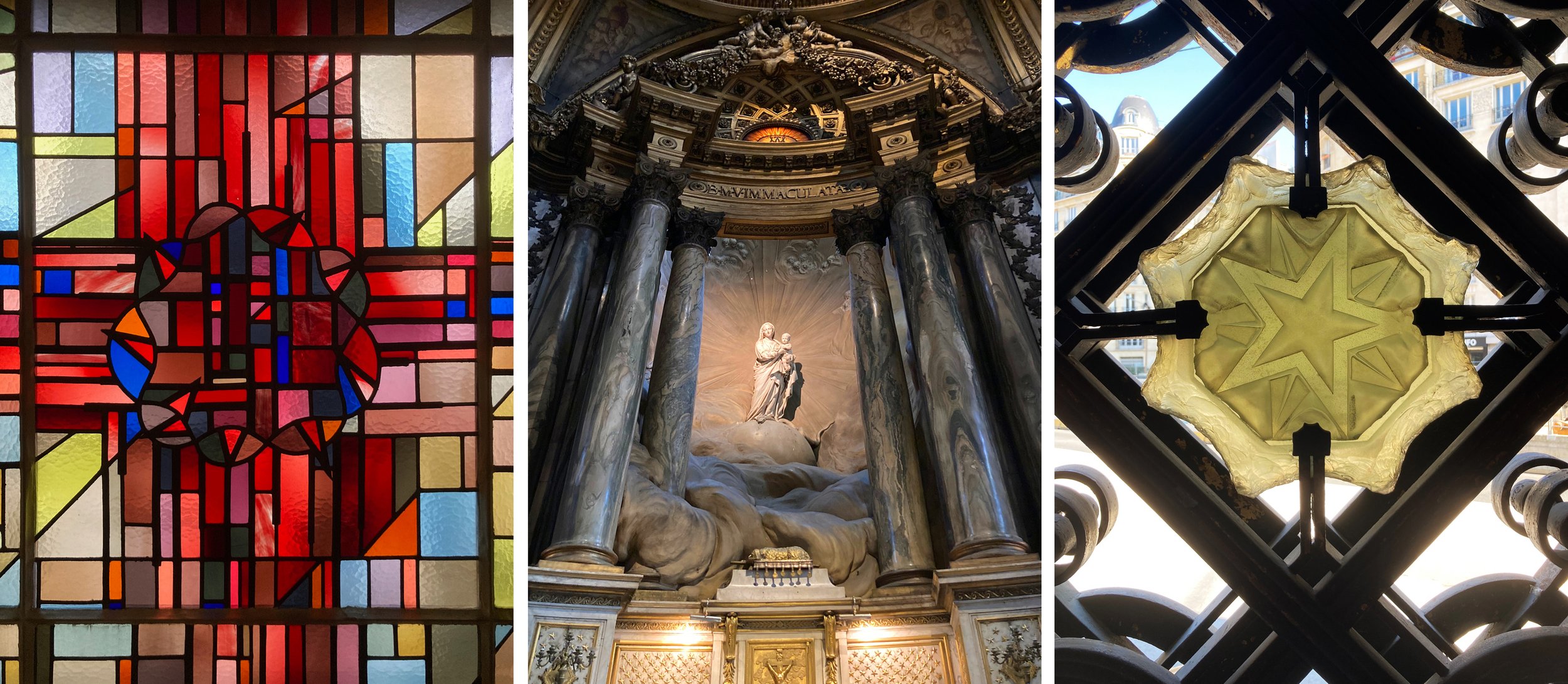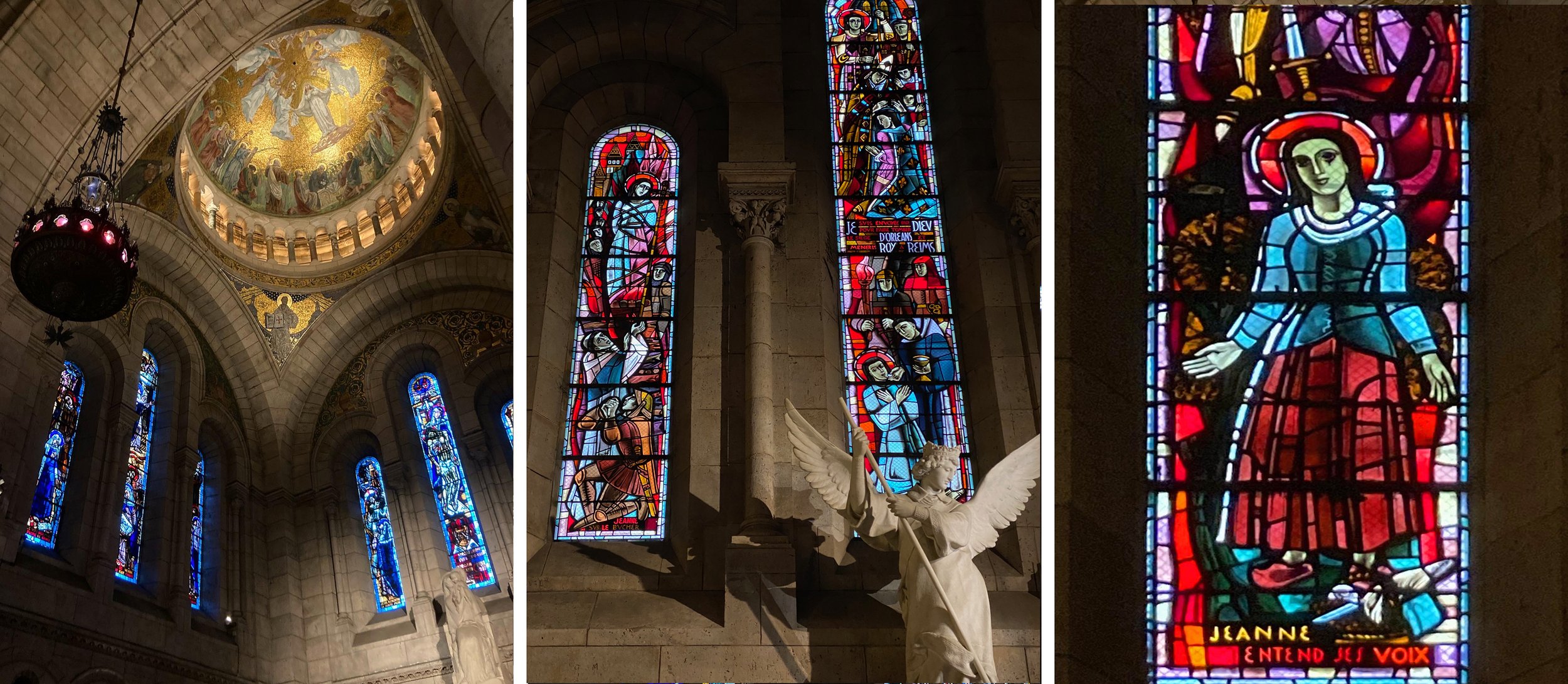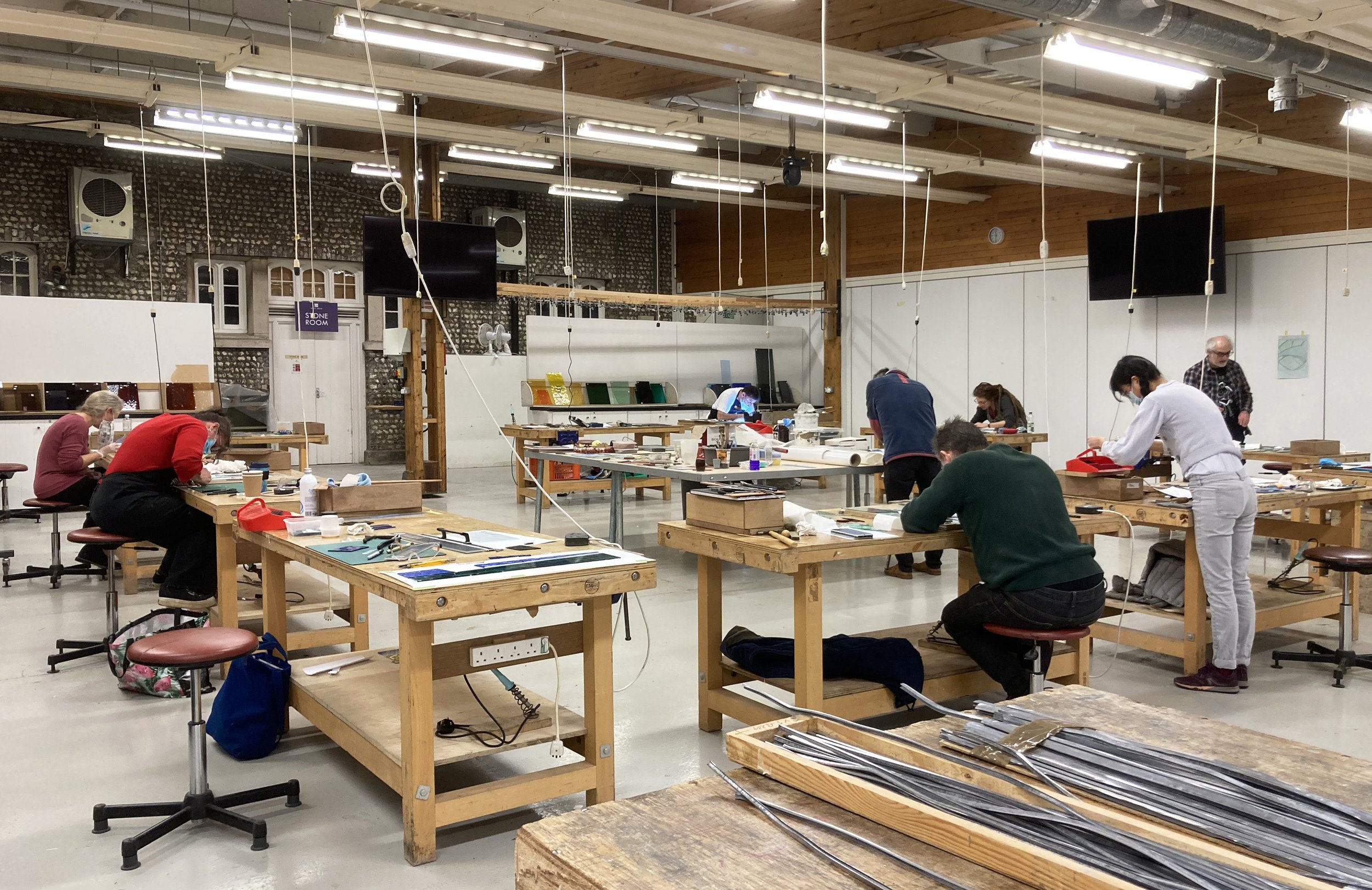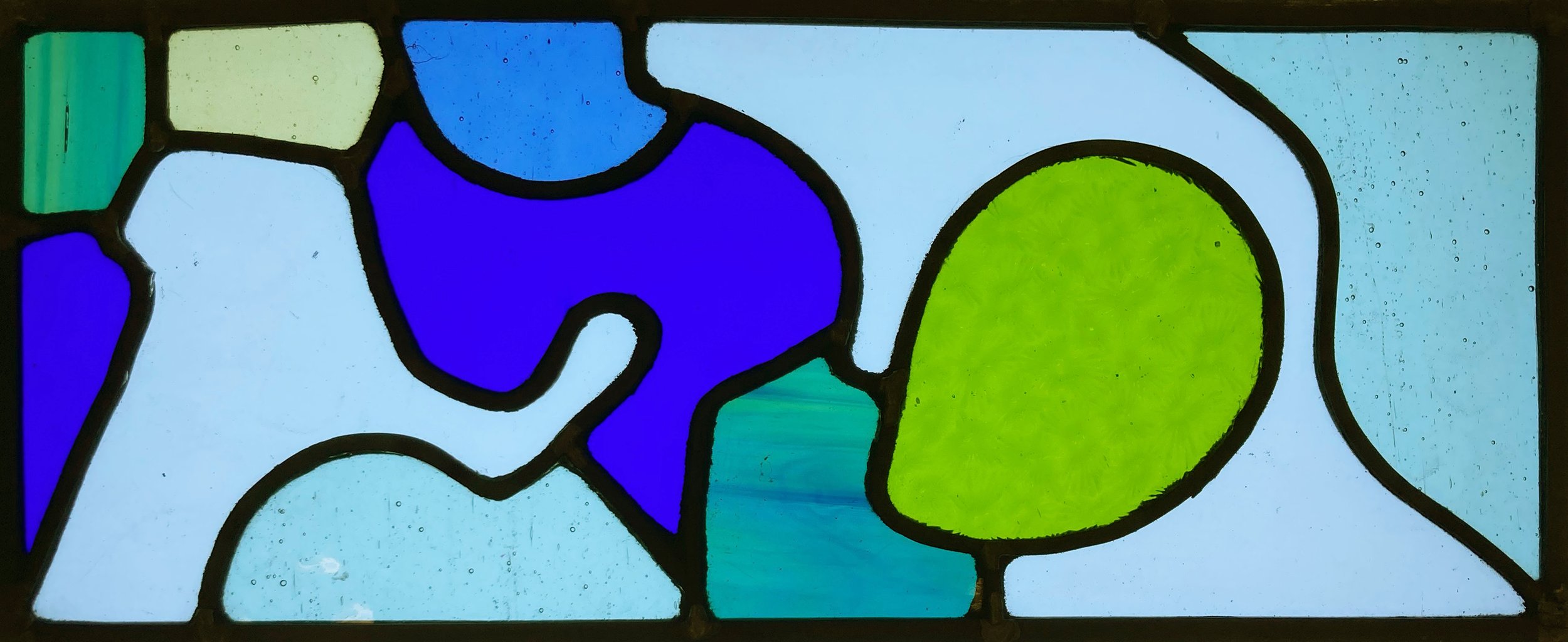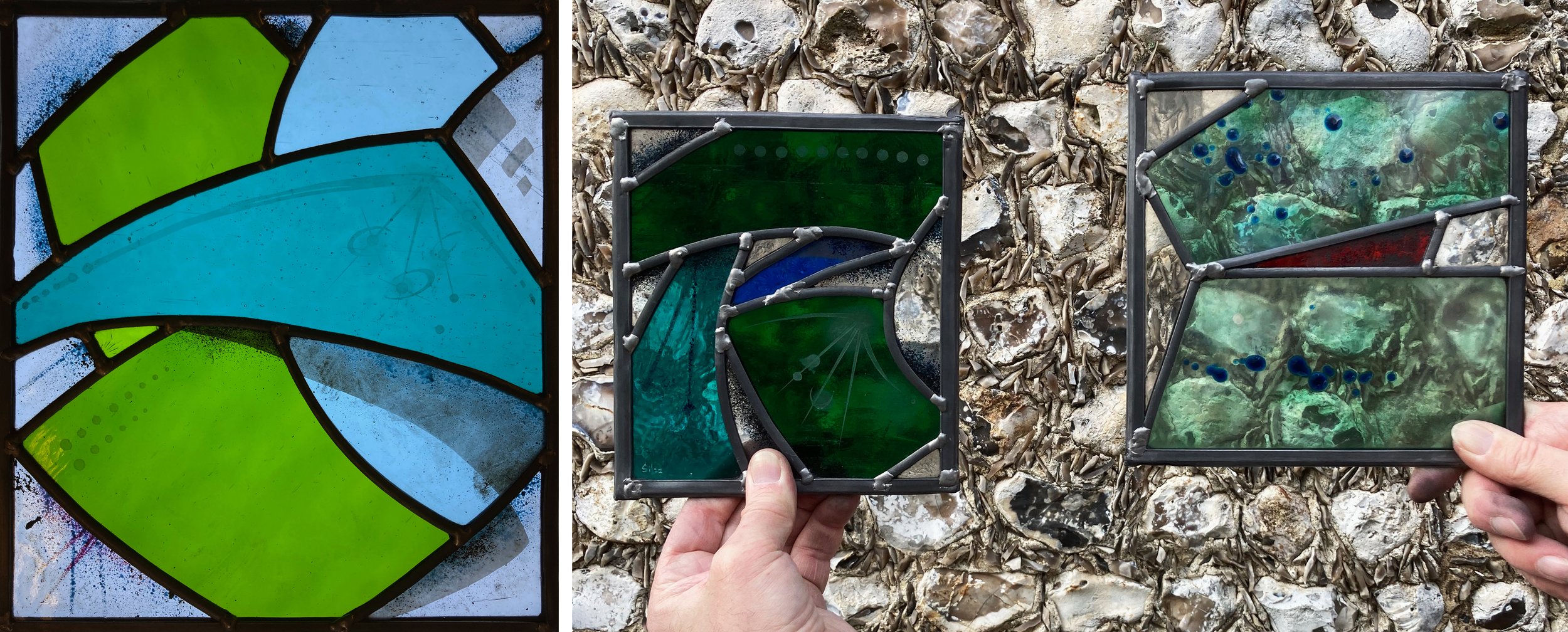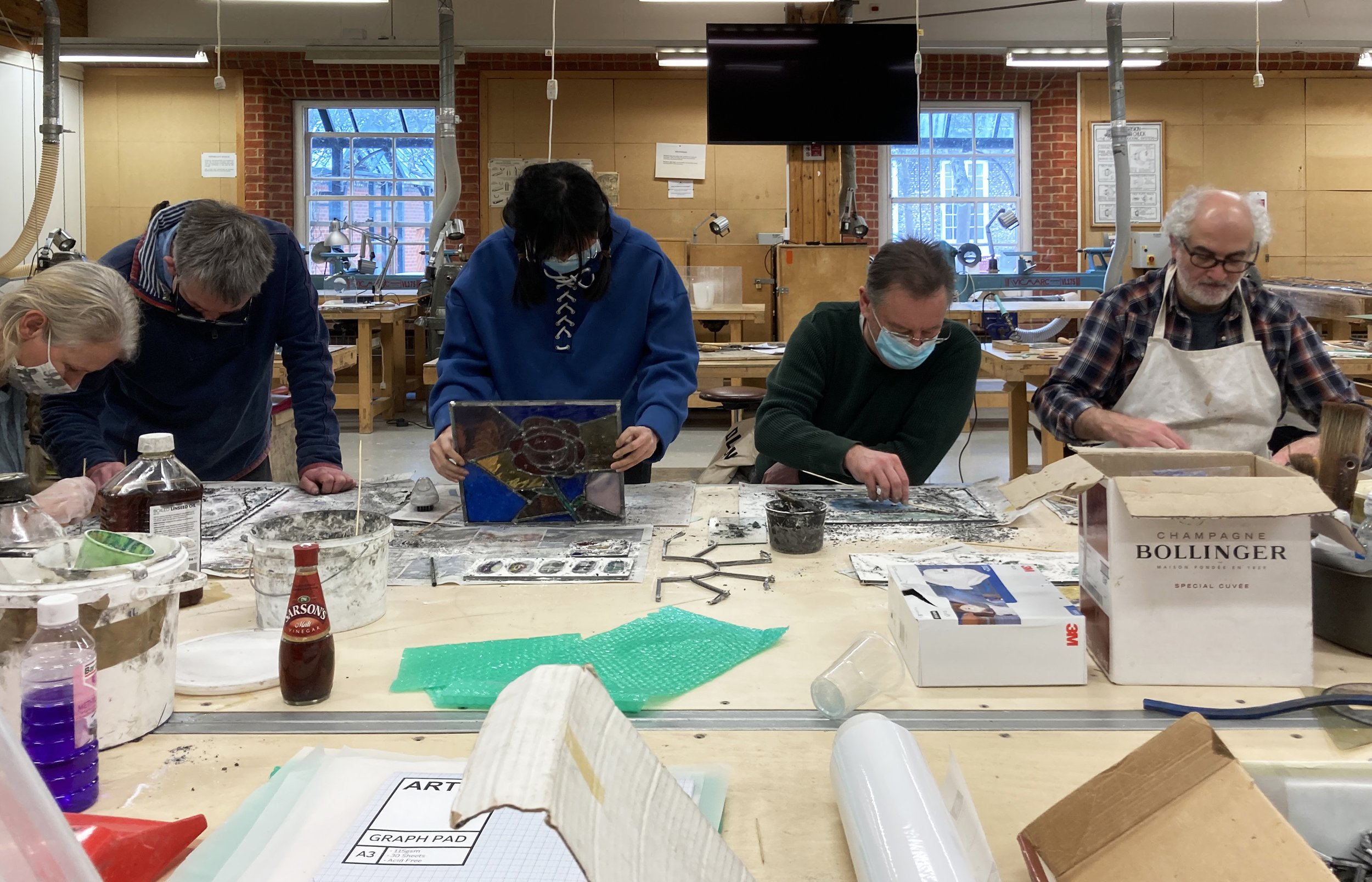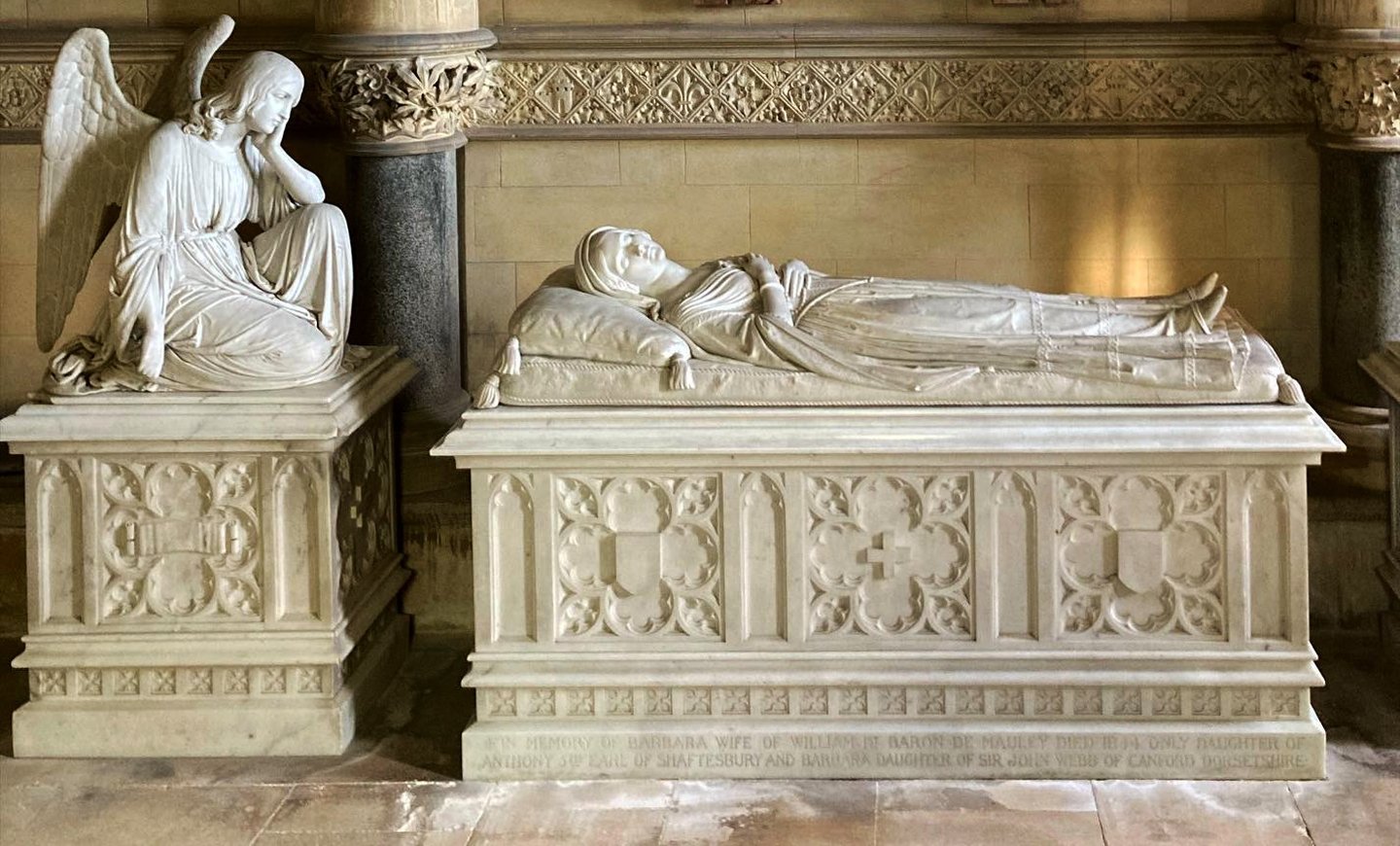Left to right: courtyard at Hotel de la Marine, dome of Bourse de Commerce, dome of Galeries Lafayettes.
A trip to Paris, the first time out of England for more than two years, left me with snapshots of windows as I was led around a succession of beautiful interiors lit by a bright blue spring sky.
As well as museums, galleries, shops and cafes, there were of course churches. All were open, busy and awe inspiring with a wealth of art - paintings, sculpture, stained glass - in every one.
Left to right: window in St Jean de Montmartre, inside St Sulplice, door detail at Ste Odile.
The church I knew I wanted to visit was Ste Odile, north of the city centre. Built from 1935-46 in Romanesque-Byzantine style, it was designed by Jacques Barge, made of reinforced concrete and filled with wonderful architectural details in brick, stone and glass. The three huge windows are the work of Francois Decorchement and are made entirely of pate de verre set in cement blocks. The detail (below right) shows the characteristics of the technique quite well, it is astonishing to see it used on this scale, the effect is of a multicoloured riot of figures, symbols and everyday scenes.
Ste Odile, windows by Francois Decorchement 1935-38
The church that surprised me the most was Sacre Coeur, I’d never thought of going inside before because I’d regarded it principally as a landmark. All around the basilica are the most wonderful stained glass windows, 33 in total, designed by Theo Hanssen and made by L Gouffault from 1949. Here, the colour combinations are rich but beautifully judged and the figures are unmistakably of their period.
Sacre Coeur, windows by Theodore Gerard Hanssen 1949
The church that most needs to be seen in real life is St Severin, one of the oldest still standing on Paris’ left bank. A set of seven windows by Jean Bazaine all around the apse harmonises perfectly with this fifteenth century gothic interior, something that’s impossible to judge from photos. Each piece of glass looks like a coloured brushstroke, I think due to the light, skilful grisaille paintwork. The subject matter is the seven sacraments of the church.
St Severin, windows by Jean Bazaine 1965-70
My last three windows (below) all show a glimpse of something beyond the glass, part of a rich and intriguing snapshot of the city.
Left to right: interior at Hotel de la Marine, door at Giacometti Institute, window at Institut du Monde Arabe.

